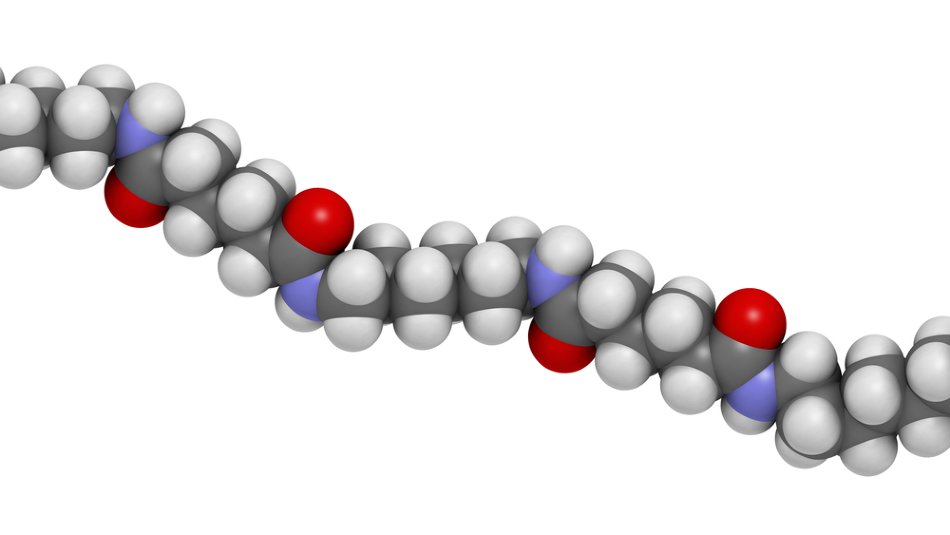May 12 2001

Image Credit: StudioMolekuul/Shutterstock.com
Article updated on 27/02/20 by Clare Kiernan
Initially developed to imitate the properties of Nylon 6/6, polyamide 6 (PA 6) is a semi-crystalline thermoplastic polymer. Its production was due to the patenting of Nylon 6/6 and the requirement for a material that had similar characteristics. Unlike other polyamides usually formed by condensation polymerization, PA 6 is formed by ring-opening polymerization. PA 6 can be reinforced by the inclusion of minerals in its structure giving it a distinct set of properties.
Advantages When Compared to Unmodified PA 6
- Increased tensile strength
- Higher flexural modulus
- Strong dimensional stability
- Higher stiffness
Disadvantages When Compared to Unmodified PA 6
- Significantly reduced notched izod impact strength
- Lower elongation at break
Typical Properties
|
|
|
|
Density (g/cm3)
|
1.55
|
|
Surface Hardness
|
SD75
|
|
Tensile Strength (MPa)
|
70
|
|
Flexural Modulus (GPa)
|
3
|
|
Notched Izod (kJ/m)
|
0.08
|
|
Linear Expansion (/°C x 10-5)
|
6
|
|
Elongation at Break (%)
|
10
|
|
Strain at Yield (%)
|
N/A
|
|
Max. Operating Temp. (°C)
|
80
|
|
Water Absorption (%)
|
0.5
|
|
Oxygen Index (%)
|
22
|
|
Flammability UL94
|
HB
|
|
Volume Resistivity (log ohm.cm)
|
15
|
|
Dielectric Strength (MV/m)
|
30
|
|
Dissipation Factor 1kHz
|
0.2
|
|
Dielectric Constant 1kHz
|
8
|
|
HDT @ 0.45 MPa (°C)
|
230
|
|
HDT @ 1.80 MPa (°C)
|
120
|
|
Material. Drying hrs @ (°C)
|
3 @ 95
|
|
Melting Temp. Range (°C)
|
260 - 290
|
|
Mould Shrinkage (%)
|
0.7
|
|
Mould Temp. Range (°C)
|
50 - 80
|
|
Applications
This may be utilized in creating casings and engineering parts requiring high stiffness and dimensional stability.
Source: Abstracted from Plascams
For more information on Plascams please visit RAPRA Technology Ltd.
|